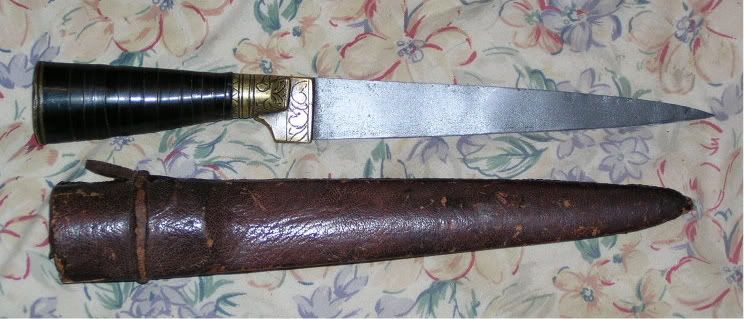
 |
|
|
|
|
#1 |
|
Member
Join Date: Mar 2006
Location: Room 101, Glos. UK
Posts: 4,259
|
the sardinian-hmong connection is well known, hmong raiders settled in the mountains centuries ago after raiding as part of a berber contingent in the 8th century, meeting some local girls, and settling down to selling noodles. they were particularly good at raising spaghetti trees and selling the pasta seeds to the italians and the swiss...
the BBC did a documentary on the swiss spaghetti harvest of 1957. little known was that the seeds actually came from the hmong region of sardinia, their plant breeders are legendary in producing uniform lengths of spaghetti... hmong style knives  were quickly adopted as they were uniquely effective in cultivating the spaghetti plants. Swiss spaghetti harvest 1957 <=linky to video in the video they reference the dreaded spaghetti weevil, we see here a sardinian hmong child with one of the newly hatched weevils, which reach up to three feet in length in their late adult lives. spaghetti weevils may live up to 30 years, growing and moulting annually before reaching their full 3 ft. size, they are cooked and eaten like lobster and are a delicacy.  hmong swords are traditionally carried into the fields for dispatching these weevils, which thru their efforts are largely extinct.  a traditional hmong two-sword weevil killer dance ritually performed prior to entering the spaghetti orchards of sardinia.. Last edited by kronckew; 27th October 2009 at 11:49 AM. |
|
|

|
|
|
#2 |
|
Member
Join Date: Dec 2004
Posts: 1,247
|
...and with the spaghetti weevil becoming rare, the people had to switch to eating spiny lobster instead, thus founding the great tradition of Mediterranean pasta and seafood.
With the weevils gone, the Sardinians switched to making smaller knives, such as this folding version. Every once in a while, you find the big old knives sitting in a farmhouse back in the old spaghetti orchards. Last edited by fearn; 27th October 2009 at 03:54 PM. |
|
|

|
|
|
#3 |
|
Member
Join Date: Mar 2006
Location: Room 101, Glos. UK
Posts: 4,259
|
nice knife, by the way.
we now have put to rest that evil venetian propaganda that marco polo, centuries after the hmong resettlement, brought back noodles from the orient in his travels. |
|
|

|
|
|
#4 |
|
Member
Join Date: Dec 2004
Posts: 1,247
|
Thanks. I wish I owned it.
Isn't that whole Marco Polo myth amazing? I can't believe people have believed it so long. Why, Trader Joes was selling raw spaghetti fruit in their produce section about a month ago, and people still insist on buying the dried, processed product. Fresh is so much better! Of course, we're not helping. No one has posted any of the antique spaghetti harvesting or processing knives in way too long. It's a shame, really--they're such weird knives for Europe. Anybody have one? Best, F |
|
|

|
|
|
#5 |
|
Member
Join Date: Mar 2006
Location: Room 101, Glos. UK
Posts: 4,259
|
unfortuneatly the only knife i have that might be sardinian appears to be not hmong. thus probably not for the spaghetti trade.
this one that katana has asked me to not tell him it is wootz...  and has been variously described as syrian/balkan/egyptian and/or sardinian. quite likely mediterranean anyway. doubt it is hmong. likely not iflissan either. anyhow, it's the only maybe sardianian one that pops up on a search here on 'sardinia'. Med. knife thread linky we are drifting due to lack of iflissan input i guess.... Last edited by kronckew; 27th October 2009 at 10:07 PM. |
|
|

|
|
|
#6 |
|
Member
Join Date: Dec 2004
Posts: 1,247
|
That's a neat knife too.
As for the one I showed, I'd actually noted the knives the Sardinians were using on an episode of <i>Anthony Bourdain: No Reservations</i> and looked it up on the web. The one thing that *is* somewhat relevant to the flyssa origin story is that these deep bellied, straight backed, long-tipped knives keep showing up in the Mediterranean. The Sards have them as kitchen and pocket knives, the Kabyles have a similar design on the flyssa, the rhomphaia (at least in Roman times) could be similar, and so on. Should we include the yataghan as well? Joking aside, it appears to be a useful design, and I wouldn't be surprised if the talibon and the Hmong kitchen knife weren't independently origins of the design, brought about by smiths trying to make a basic knife more useful by extending the point and deepening the belly. Best, F |
|
|

|
 |
|
|